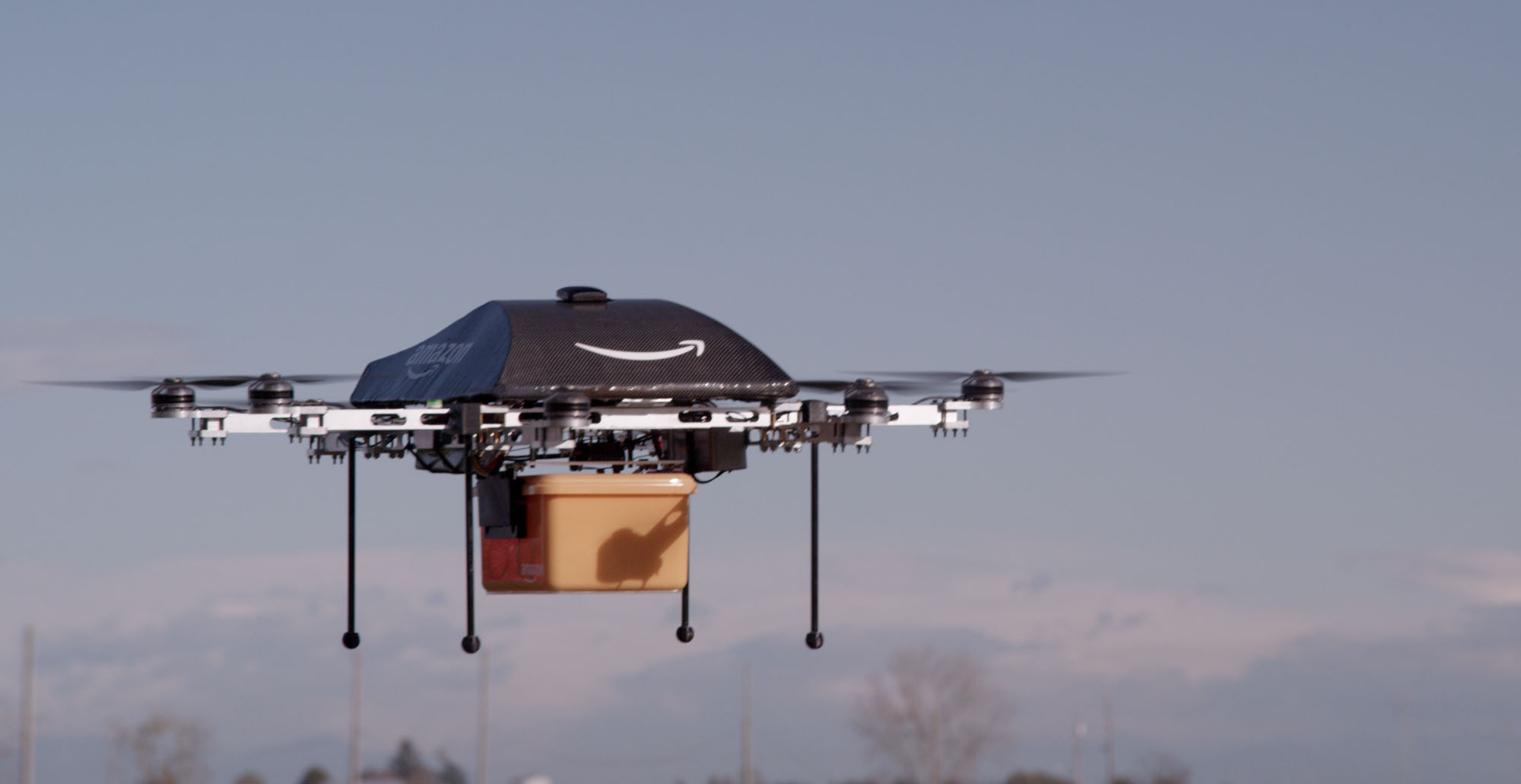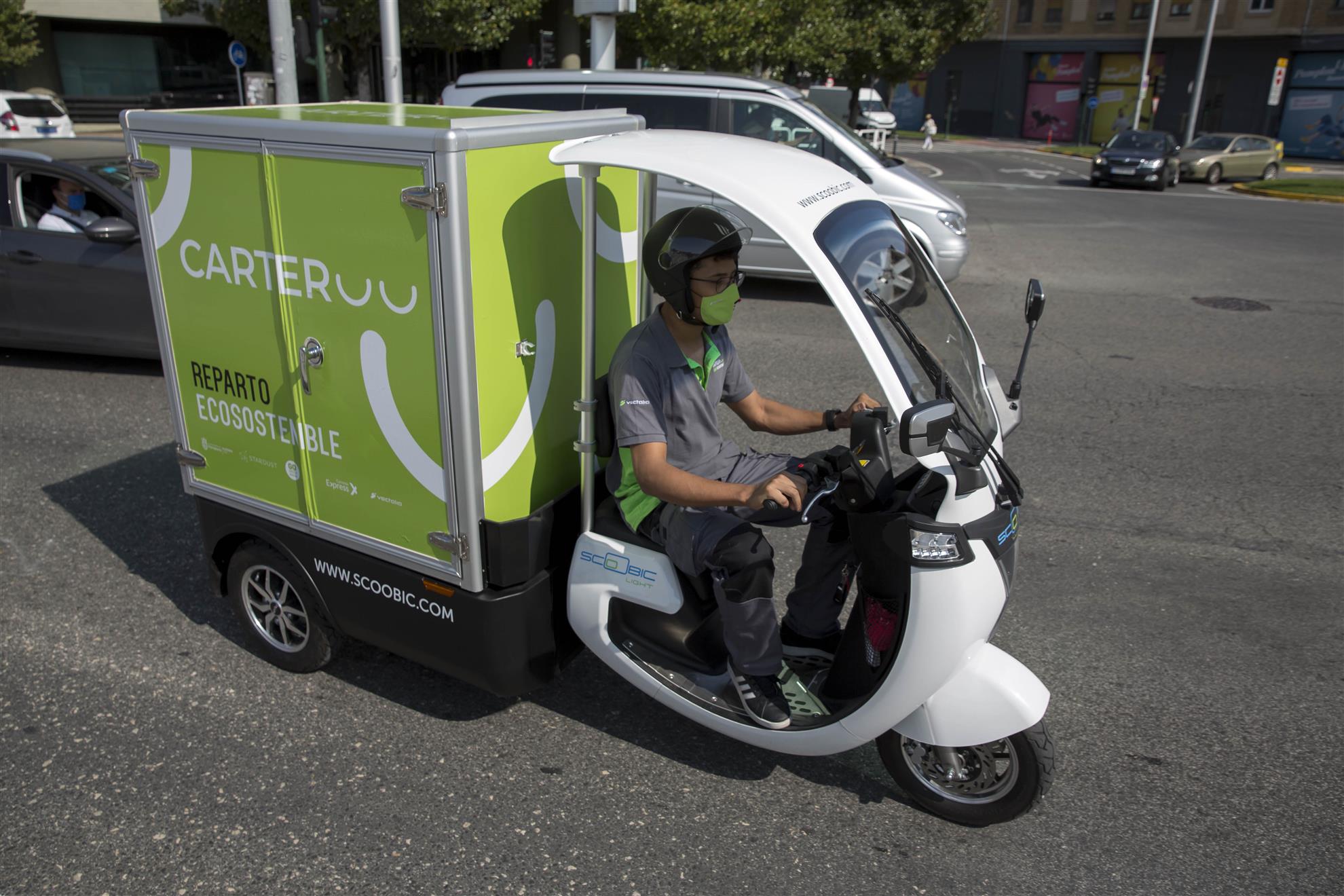What if Santa rode a four-legged robot? What looks like a sci-fi fairy tale might soon come true. Nowadays it is not reindeers that bring holiday gifts to our homes, it is most often a cumbersome, noisy and polluting van. But things have already started to change, and the pandemic is helping speed up the transition.
With the health crisis and total or partial lockdowns imposed all over Europe, e-commerce has played a crucial role in keeping economic activity alive. Retailers of all sizes are going digital even faster, developing new multiplatform commerce solutions. According to the OECD, “In the EU retail sales via mail order houses or the internet in April 2020 increased by 30% compared to the same period in 2019, while the total sales in the sector fell by 17.9%.”
This has led home shipping to skyrocket: parcel delivery activities have boomed everywhere, in some countries such as France and Italy postal services had to hire more staff. In this context the means of transportation are key to reducing traffic and CO2.
Some solutions are quite creative, like the above mentioned four-legged robots. The German company Continental is testing a technology that combines a driverless electric vehicle and a small fleet of robot “dogs”, which cover the “last mile” of delivery. Developers claim the most promising markets are Asian: Taiwan, Singapore, or Japan, countries that are very open to robotics solutions.

Driverless vehicle and delivery robodogs developed by the German company Continental - Credits: © Continental AG
Drones are another option. In 2013, Amazon’s announcement of the future launch of the Prime Air service was met with enthusiasm by some and with incredulity by others. The service was meant to deliver parcels weighing up to five kilos in 30 minutes or less using unmanned drones guided by GPS technology. Numerous tests have been made since, but the project has not yet seen the light of day. The Financial Times reported in November that the e-commerce giant was firing staff involved in the drone programme, just months after receiving in the USA the green light from the FAA (Federal Aviation Administration) to fly its drones. However, they still claim to be more committed than ever to launching the project.

The Amazon delivery drone to get packages to customers in 30 minutes - Credits: Amazon
Even if many drone delivery projects have taken off in the last years, they are still far from becoming a daily reality, says Luca Masali, editor in chief of the Italian magazine DronEzine. He explains: “Aviation rules around the world, which are elaborated by ICAO, the United Nations aeronautics agency, currently do not allow automatic flight inside the cities; drones are highly limited in payload and autonomy; the technology for automatic flight is not ripe yet”.
He adds that there are indeed some interesting experimentations, especially in the military and medical fields: “The company ZipLine carries blood, vaccines, and samples for analysis between hospitals in Africa. Swiss Post connects two hospitals by flying over the Lake Zurich, but they have already had two serious accidents. In the US, a drone was used to transport a kidney for a transplant but it was really experimental, much too slow. In Italy, a hemodron [drone for the transport of human blood, Ed. Note] in the Romagna region fell on the roof of a hotel… But luckily it was carrying no blood, it was an exercise. Google has also done delivery tests in rural areas of Australia but never went further than that. More advanced are DHL's tests, and there are also interesting local services: one very advanced in Iceland, across a fjord in Reykjavik.”
For now the most promising solutions seem to happen on the ground, not in the air. In 2020, Trento, situated in North-Eastern Italy, ranked first in the country for its environmental performance for the second year in a row, according to the “Ecosistema Urbano” (“Urban Ecosystem”) report by the NGO Legambiente. Among its smart initiatives, there is a last-mile logistics centre with electric vehicles: a warehouse located outside the historic centre that will collect goods from the “traditional” couriers.
The solution is part of the activities carried out by the Municipality under the EU smart city project called STARDUST. Marco Cattani, director of the municipal company Trentino Mobilità, explains: “It will be structured as a hub, possibly with several mini-hubs around the city centre, where you will find electric vehicles for the deliveries. The organisation managing this structure should interact with couriers, with a business-to-business (B2B) approach, taking charge of the goods to ship for the last part of the journey within the city”. In order to do so, it will be necessary to sign specific deals with these operators. The service will be optional, but there will be financial incentives, such as permission to enter the restricted traffic zone (ZTL).”
A similar pilot project, called Carteroo, is already under way in Pamplona, Spain (another “lighthouse” city of STARDUST). It was launched in September 2020, as part of the European Mobility Week, with the signing of the agreement between the State Post Office public company (Correos), Vectalia, which is the transport and logistics company currently in charge of managing Pamplona's intercity bus station, and the City Council. They have teamed up to create a last-mile logistic hub at the bus station itself to distribute the Post Office parcels in the pedestrianised Old Town, where vehicle access is restricted and controlled.

Electric motorcycle for last mile delivery in the centre of Pamplona, Spain – Credits: Pamplona City Council
The distribution is done with an electric delivery motorcycle. A six-month project has been agreed to prolong the experience and include more vehicles and new areas of the city in the near future. Pamplona City Council has also installed a photovoltaic cover on the bus station that, connected to a micro-network, offers 100 per cent renewable energy to the bus station and allows electric vehicle recharging through a 50 KW quick recharge pole.
In December, the pilot project's first results came out. “The distribution of parcels through the electric delivery motorcycle has been increased to more than 60 deliveries per day and is close to being able to eliminate the conventional delivery in diesel van in the area of the Old Town,” says Maribel Gómez Jiménez, head of Mobility unit, which is included in the area of Strategic Projects, Mobility and Sustainability of the Municipality.
On the emissions front, this has meant a saving of 259 kg of CO2 in the 1,310 km that have been travelled from September 16 to December 1. But the project's ambitions are bigger, continues Gómez Jiménez: “The objective is to cut 1,480 kg of CO2 per year. This is thanks to the replacement of combustion engine vans with electric delivery motorcycles, in addition to the optimised operations and the extended delivery schedule.” Indeed, she explains, the electric delivery motorcycles enjoy better access to the Old Town than polluting vehicles do.
So, maybe it is a bit early for four-legged robots, but in Pamplona this year there will be electric, three-wheeled “reindeers” to bring gifts to well-behaved children. Hopefully, Santa’s driving license covers that too.
youris.com provides its content to all media free of charge. We would appreciate if you could acknowledge youris.com as the source of the content.